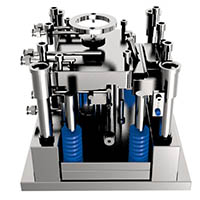How to solve the problem of poor exhaust in injection molds, also known as trapped gas

The exhaust of injection molds is an issue that cannot be ignored in mold design. Poor exhaust can cause numerous problems, such as porosity, voids, burning, bubbles, surface silver lines, and obvious fusion lines.
The gas accumulated inside plastic molds mainly comes from the following sources:
1. The air stored in the mold feed system and mold cavity
2. The water vapor generated by the evaporation of water contained in plastics at high temperatures
3. The gas produced by the decomposition of plastics
4. Gases generated by the volatilization or chemical reactions of certain additives in plastics
5. Air and moisture mixed in the feed!
The basic design points for injection molds with poor exhaust, also known as trapped air, can be summarized as follows:
1. The exhaust of injection molds should be ensured to be rapid and complete, and the exhaust speed should be suitable for the filling speed;
2. The exhaust groove of the injection mold should be set up as much as possible in the forming part with thicker rubber parts;
3. The exhaust groove of the mold should be set on the parting surface as much as possible;
4. The exhaust groove of the mold should be located as much as possible at the end and confluence of the material flow, such as the end of the cold material well;
5. For the convenience of mold manufacturing and cleaning, the exhaust groove should be located on the concave side of the mold as much as possible;
6. The direction of the mold exhaust groove should not face the operating surface to prevent material leakage and injury during injection molding;
7. The exhaust groove of the mold should not have sharp corners to prevent the accumulation of cold materials;
8. The size and size of the mold exhaust groove must be appropriate (generally around 0.2-0.3mm in thickness), and processing should be selected according to specific material and product requirements to avoid causing burrs as much as possible.
The common exhaust forms of injection molds include:
1. Exhaust groove or hole for exhaust
2. Exhaust from the parting surface
3. Exhaust the gaps in the assembled parts
4. Exhaust the gap between the push rod or top pin
5. Powder firing combined with gold block exhaust
6. Set exhaust rod for forced exhaust
7. Use a vacuum exhaust machine to achieve active and complete exhaust.
8. Mold exhaust steel, exhaust plugs, etc. for exhaust
